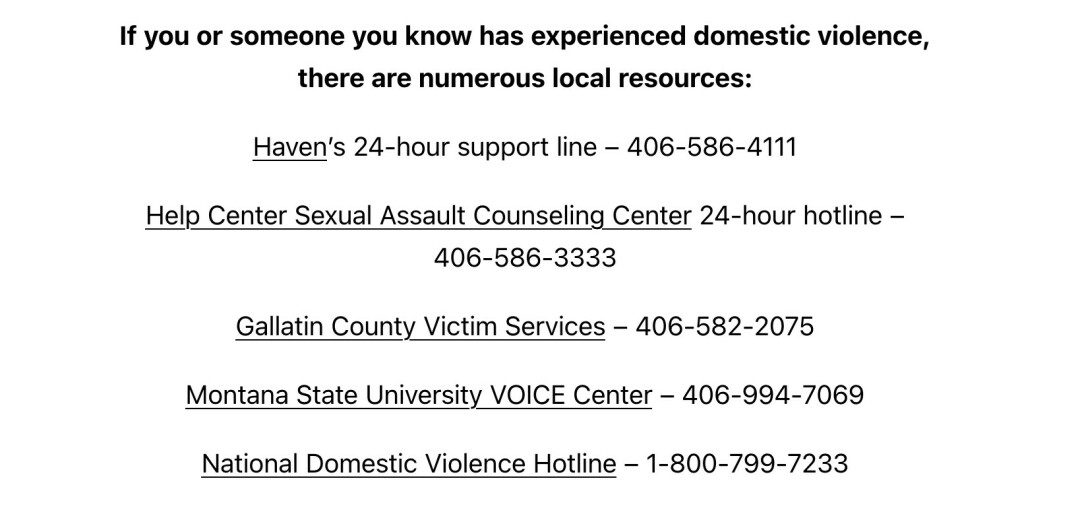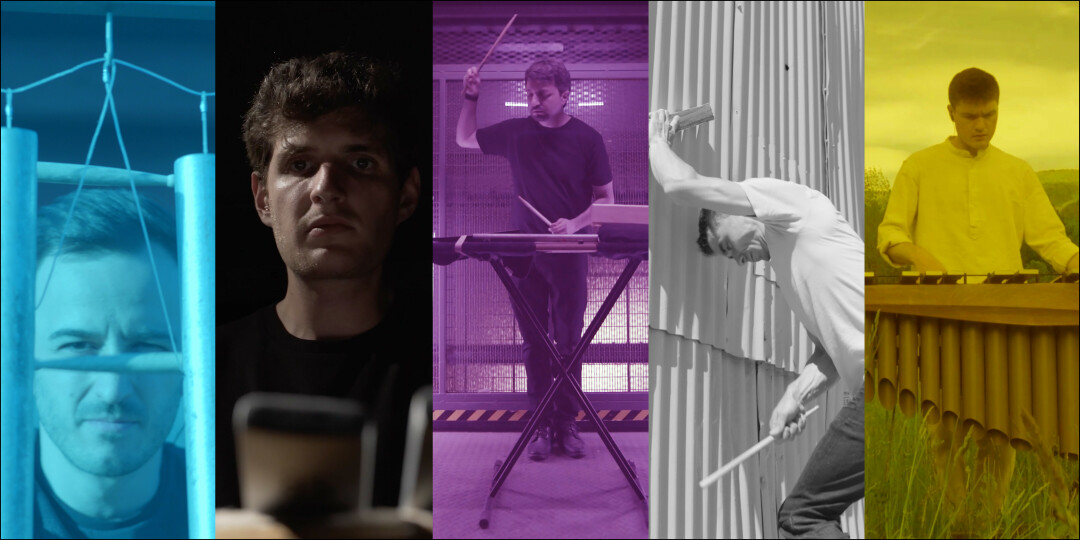Gallatin County DVRT Tackles Domestic Violence Issues in Our Community
Read the paper in Gallatin County often enough and it’s plain to see that domestic violence is a problem in our community: Stories of strangulation and other violent acts appear regularly. In the past few weeks alone, there were three high-lethality cases reported in local media – and those are just the cases where law enforcement has intervened.
That’s why the Domestic Violence Respose Team was created in 2012. It’s a group of law enforcement, attorneys, advocates, and more, in our county, trying to work together to address the violence that stems from one partner exerting power and control over the other partner – violence that’s on the rise in our community, according to local experts on the task force.
“Domestic violence cases are complicated to investigate and even more difficult to prosecute due to the intimacy between survivor and suspect. That is why these cases, more than others, require such a collaborative team effort to hold offenders accountable and keep survivors safe,” said Gallatin County Sheriff Dan Springer. “The predominance of homicide cases in Gallatin County are domestic related homicides. There really is no such thing as too much effort as this is truly a life safety issue.”
One in five people are survivors of domestic violence nationwide — in Gallatin County alone that’s more than 24,000 of our neighbors, friends, colleagues, and loved ones.
And each one of those survivors has family, friends, neighbors, coworkers, and classmates who have likely seen the ramifications of that abuse. Domestic violence is an issue that affects us all.
October is National Domestic Violence Awareness Month and a time to bring this topic out of the shadows and into the forefront of our community conversation. And while this month might be wrapping up, domestic violence is an issue that deserves awareness all year long.
What Domestic Violence Looks Like
Domestic violence has one core component – it’s about power and control. It describes physical violence, sexual violence, economic abuse, spiritual abuse, stalking, or psychological harm by a current or former partner or spouse.
Physical violence can be pushing, kicking, hitting, strangling, and at its worst, killing.
Psychological harm can be threats, manipulation, stalking, name-calling, criticism, blaming, and unpredictable behavior, among many others.
Economic abuse can look like denying access to bank accounts or other sources of money.
These forms of abuse do not discriminate. Anyone can experience domestic violence no matter their age, gender, race, sexuality, or socio-economic status.
Here in Gallatin County, statistics from a local domestic violence organization and from our area law enforcement provide a snapshot of how often survivors are reaching out for help locally.
Haven, a nonprofit that provides shelter, legal advocacy, a 24-hour support line, and other resources to survivors, saw a 12 percent increase in the number of people it served last year from the year before. Haven also saw a 9 percent increase in bed nights at its emergency shelter. Local law enforcement has also seen increases in the number of domestic violence-related calls they respond to.
In 2019, there were 573 calls related to domestic violence responded to among the Gallatin County Sheriff’s Office, and Bozeman, Belgrade, Montana State University and Manhattan police departments. That number jumped over 41 percent in 2021, with 810 domestic violence calls responded to by those agencies.
“The number of survivors seeking support right now is far outpacing the growth we’re experiencing as a community,” Haven Executive Director Erica Aytes Coyle told KBZK-TV in August.
Gallatin County Domestic Violence Response Team
A local multi-jurisdictional team of professionals has been tackling this issue head on in Gallatin County for over a decade.
The Gallatin County Domestic Violence Response Team (DVRT) meets monthly with the goal to ensure that each agency and each practitioner, 911 operators and patrol officers, courts and probation officers, is on the same page in maximizing both the safety and well-being for survivors, and the accountability for offenders.
The purpose of DVRT is to educate the community, improve community-wide system response and collaboration, and influence statewide policy regarding domestic and sexual violence.
The team is made up of representatives from the Gallatin County Attorney’s Office, Gallatin County Victim Services, Gallatin County Court Services, Gallatin County Sheriff’s Office, Bozeman Police Department, Montana State University Police Department, Hearts and Homes; Gallatin County Court Services, Bozeman City Attorney’s Office, MSU VOICE Center, Gallatin County Child Protection Services, and Haven.
“It’s only by working together that we can see the gaps in how our community responds to domestic violence, and in how we can all work together to save lives and support survivors,” said Bailey Brubaker, the Haven staffer who’s been facilitating the Domestic Violence Response Team since January. “We’ve got a few things in the works for the coming year. It’s exciting to be part of the momentum we’re gaining.”
During Domestic Violence Awareness Month and beyond, we encourage our residents to educate themselves on domestic violence, talk about it, bring this topic into the light, and work together to end this issue in our community.







News Comments
Thank you
Open Auditions for Annie
Monday, Sep. 16, 2024
I’m at the Bozeman airport where your painting, “Blowing East” is displayed. It’s absolutely gorgeous! Bravo, Marci!!
The Artists’ Gallery in Bozeman’s Emerson Cultural Center May Exhibits
Sunday, Jun. 30, 2024
This is so typical of a sign in, which we should not have to do to check if we or some one in our party got a permit. I have been working or "creating an account" for 30 minutes and just get the same ...
Smith River permit drawing results available
Sunday, Mar. 10, 2024
I have struggled with this podcast and my own participation therein, the event itself obviously traumatic, but beyond that my inability to reach anyone and convey anything resembling truth. The person ...
Billings, MT Case Becomes True Crime Podcast | 'An Absurd Result'
Marktokarski
Saturday, Jan. 20, 2024